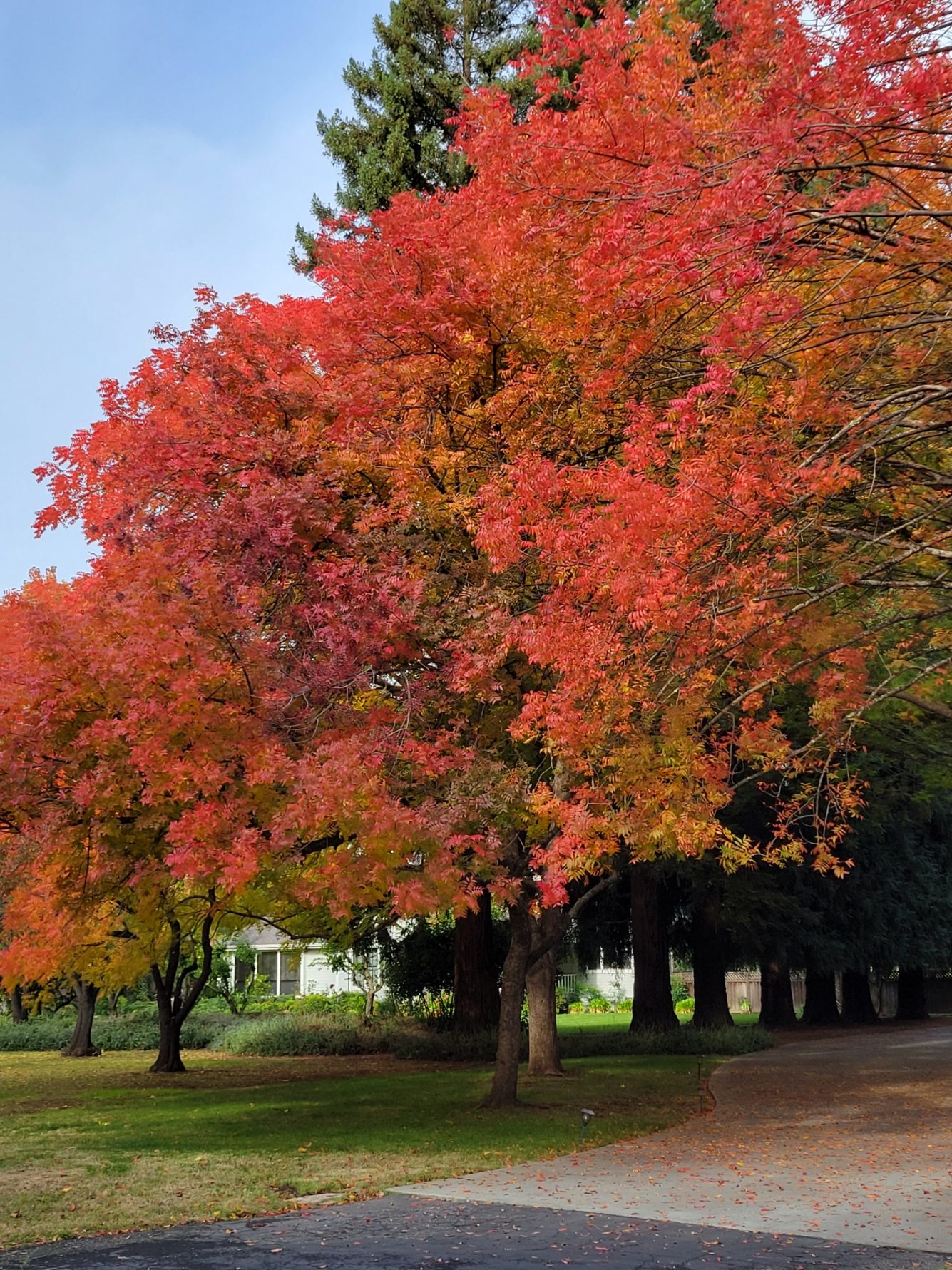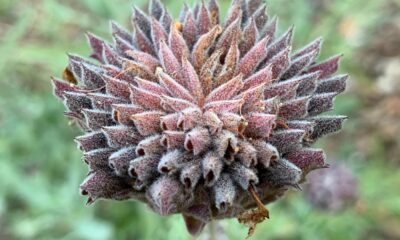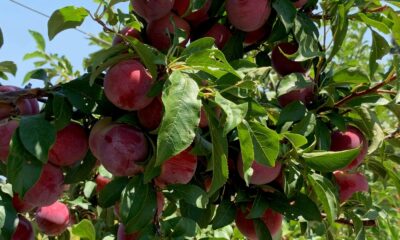Education
Autumn Leaves Dazzle as Color Variations Captivate Observers

Autumn has arrived in Butte County, bringing with it a stunning display of colorful foliage. As summer’s heat fades, deciduous trees transform their leaves into vibrant hues of red, yellow, and orange. The intensity of these colors can vary year to year, and understanding the science behind this seasonal change reveals much about the trees’ responses to environmental factors.
Understanding Leaf Color Changes
The process driving the color transformation begins during the long summer days, where leaves utilize sunlight to convert water and carbon dioxide into sugar through photosynthesis. Chlorophyll is the green pigment that plays a vital role in this process by absorbing light energy. As days shorten and temperatures cool, chlorophyll production decreases, leading to a halt in photosynthesis. Consequently, pigments like carotenoids, which produce yellow and orange colors, become more visible.
In addition to carotenoids, some trees produce a pigment known as anthocyanins during autumn, which gives leaves their striking red coloration. The annual cycle of color change is influenced by various factors, including temperature and moisture. Notably, a severe drought can delay the onset of fall colors by several weeks, while a dry fall with sunny days and cool nights contributes to more vibrant foliage.
The Science of Leaf Drop
As temperatures drop, trees begin to shed their leaves in response to hormonal signals. This process involves abscission cells, located at the junction of the leaf stem and branch. These microscopic cells form a layer that eventually “cuts” the leaf away from the tree when the appropriate chemical signals are received. Leaves that remain attached longer can still be vibrant, especially if abscission cells do not develop as expected.
The carotenoid colors in leaves remain consistent from year to year since they are always present beneath chlorophyll. However, when a series of warm days followed by cool, non-freezing nights occurs, it creates ideal conditions for the production of anthocyanins. The warmth allows for sugar production while the cool nights prevent sap from flowing back into the tree, enhancing the vivid reds and purples that characterize autumn foliage.
This year’s early October warm spell has resulted in a particularly spectacular display of colors, enticing many nature enthusiasts to appreciate the beauty of the season.
For those interested in learning more about gardening and nature, the UC Master Gardeners of Butte County invite the community to their upcoming workshop on irrigation scheduled for November 17. While attendance is free, prior registration is required. More information and registration details can be found on their website.
The UC Master Gardeners are part of the University of California Cooperative Extension system, which supports the community through various programs, including gardening assistance. For specific gardening inquiries, residents can access resources by visiting their website or contacting their hotline.
-

 Technology5 months ago
Technology5 months agoDiscover the Top 10 Calorie Counting Apps of 2025
-

 Health3 months ago
Health3 months agoBella Hadid Shares Health Update After Treatment for Lyme Disease
-

 Health3 months ago
Health3 months agoErin Bates Shares Recovery Update Following Sepsis Complications
-

 Technology4 months ago
Technology4 months agoDiscover How to Reverse Image Search Using ChatGPT Effortlessly
-

 Technology1 month ago
Technology1 month agoDiscover 2025’s Top GPUs for Exceptional 4K Gaming Performance
-

 Technology3 months ago
Technology3 months agoElectric Moto Influencer Surronster Arrested in Tijuana
-

 Technology5 months ago
Technology5 months agoMeta Initiates $60B AI Data Center Expansion, Starting in Ohio
-

 Technology5 months ago
Technology5 months agoRecovering a Suspended TikTok Account: A Step-by-Step Guide
-

 Health4 months ago
Health4 months agoTested: Rab Firewall Mountain Jacket Survives Harsh Conditions
-

 Lifestyle5 months ago
Lifestyle5 months agoBelton Family Reunites After Daughter Survives Hill Country Floods
-

 Health3 months ago
Health3 months agoAnalysts Project Stronger Growth for Apple’s iPhone 17 Lineup
-

 Technology4 months ago
Technology4 months agoHarmonic Launches AI Chatbot App to Transform Mathematical Reasoning

















